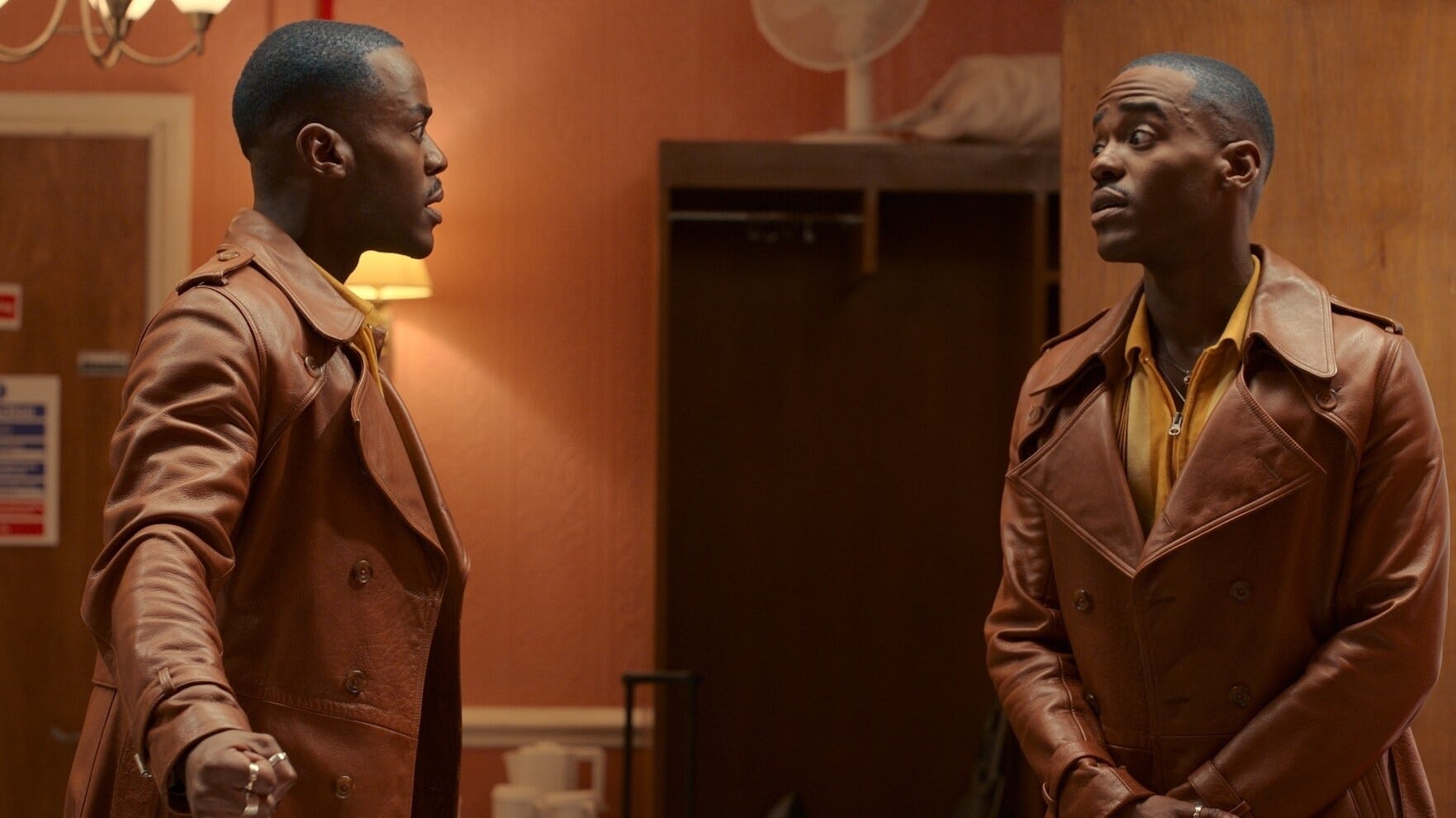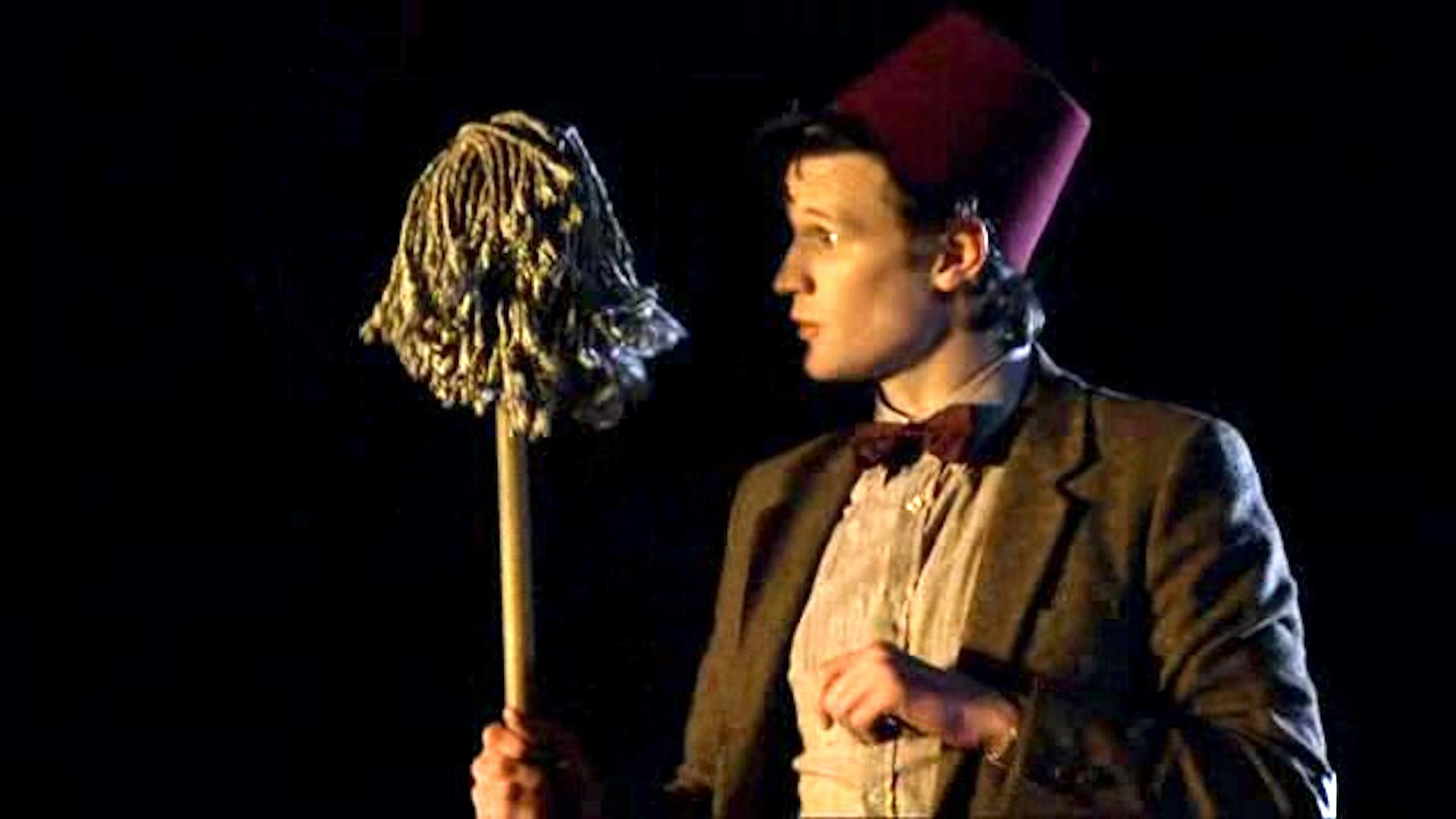
It’s hard to believe, but prior to the post-2005 modern era of Doctor Who, the show wasn’t that focused on time paradoxes. Yes, the Doctor has always been a time traveler, but the scrapes they’ve gotten into before the 21st century weren’t always connected to mind-bending time traveler twists. Before 2005, the best examples of time travel paradoxes in Doctor Who came from stand-out episodes like “The Day of the Daleks” in 1972, which foreshadowed various bootstraps aspects of The Terminator and specifically inspired X-Men comic book writer, John Byrne, to later write “Days of Future Past” in 1981.
But any of the timey-wimey paradox action of vintage Who is nothing compared to the endless parade of paradoxes in the modern era. And with the latest Who Christmas special, “Joy to the World,” one very tricky paradox has been reintroduced in a big way. Here’s how Steven Moffat’s time-travel twist in “Joy to the World” references an earlier 11th Doctor twist in “The Big Bang.”
Spoilers ahead.
The Doctor Gives Himself the Code

While trying to deactivate the deadly suitcase created by Villengard, the Doctor (Ncuti Gatwa) realizes he doesn’t have enough time to get the exact passcode. Just then, a version of himself from the future arrives and gives him the code. He then realizes he has to wait a full year to catch up to the point in time in the future where his future self has obtained the code.
This leads to arguably the best part of the episode, in which the Doctor lives humbly in a hotel for an entire year, and becomes very close with the proprietor, Anita (Steph de Whalley). At the end of the year, the Doctor meets himself again and rattles off the code. How did he know it? He remembered himself giving himself the code in the future. The information about the code then, in as sense, came from “nowhere.”
Joy (Nicola Coughlan) is unsatisfied with this answer, but in true Doctor Who form, there’s no time to explain. And yet, like Joy, the audience might be scratching their head about this paradox — also known as ontological paradox, a predestination paradox, or colloquially, as “the bootstrap paradox.” And that’s because this is a paradox that modern Doctor Who has been serving up for a very long time now.
The 11th Doctor’s Sonic Screwdriver Paradox

While modern Doctor Who has several examples of this “bootstrap paradox” — including the 12th Doctor’s (Peter Capaldi) fourth-wall-breaking explanation of said paradox in “Before the Flood” — the best, and most divisive example probably comes from the Season 5 finale “The Big Bang.”
In that episode, the 11th Doctor (Matt Smith) was trapped inside a prison designed for him: the Pandorica. But, the Doctor manages to get himself out of the Pandorica because he’s given Rory Williams (Arthur Darvill) his sonic screwdriver in the distant past. From the audience's perspective, cause and effect are inverted here: the Doctor obtains the sonic and gives it to Rory after he’s escaped. His mode of escape relies on the question of where did the sonic come from? And the answer is: The Doctor gave it to himself, via Rory.
This is the same thing that’s happening in “Joy to the World.” The Doctor is giving himself a piece of information from himself. And, unlike “The Big Bang,” in this case, the Doctor has cut out the middleman.
This type of time-travel storytelling was a massive part of Steven Moffat’s tenure as showrunner in Doctor Who, and arguably was the solution to the entire Time War in “The Day of the Doctor” in 2013. Like in “Joy to the World,” the Doctor simply gave himself time to figure something out, which had a retroactive impact on the present. The only difference is that in “The Big Bang” and “Day of the Doctor,” several centuries of waiting are involved. In “Joy to the World” the Doctor only has to wait a year for that paradox to play out. Clearly, he’s at the top of his timey wimey game.







